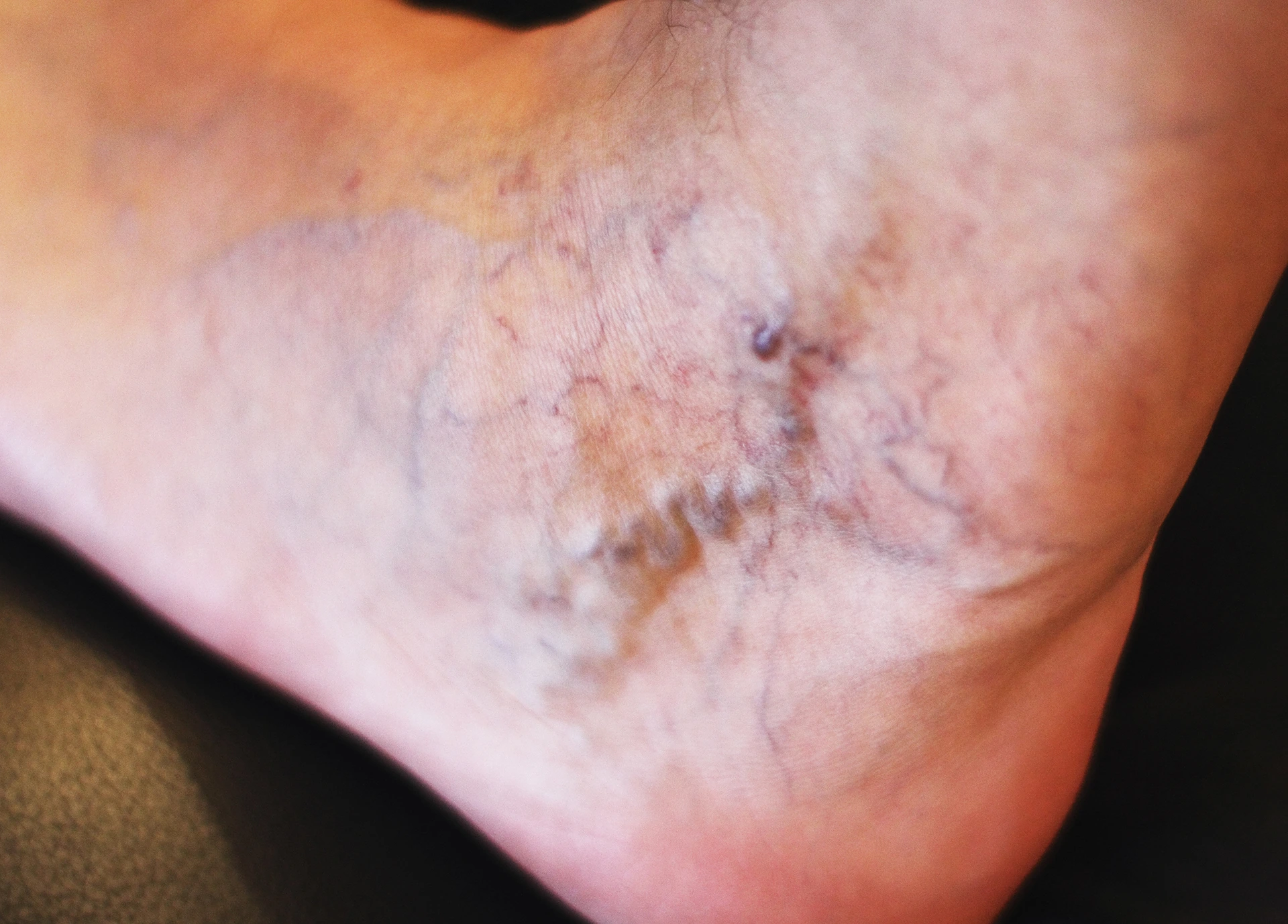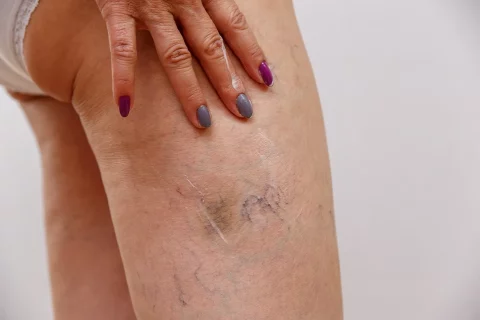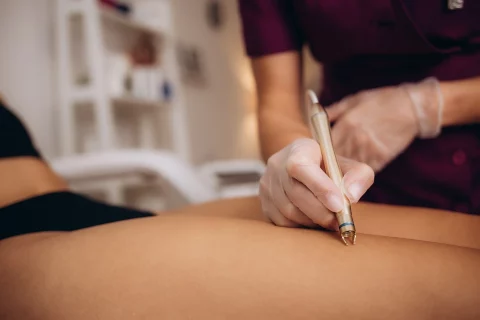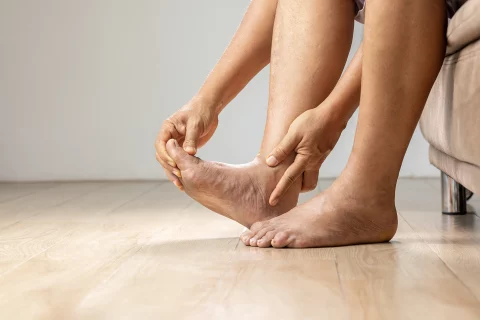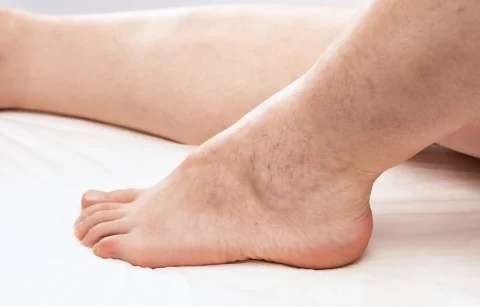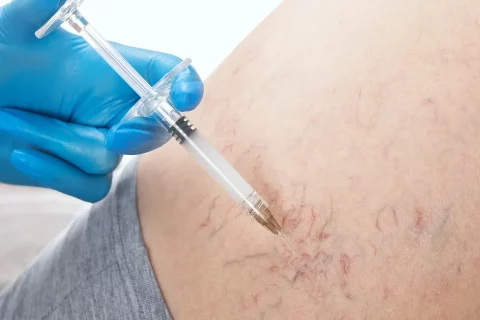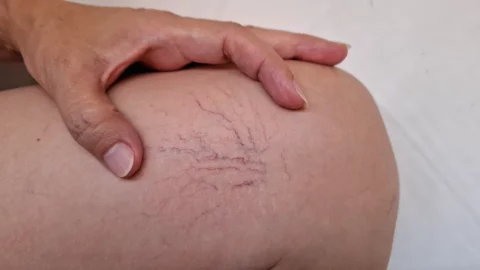Discover the stages of spider veins, from early signs to advanced symptoms.
Spider veins are a common vascular condition that affects millions of people worldwide. These small, visible blood vessels near the surface of the skin can be both a cosmetic concern and a sign of underlying venous insufficiency.
In this comprehensive guide, we’ll explore the stages of spider veins, their progression, symptoms, and available treatment options to help you better understand and manage this condition.
What Are Spider Veins?
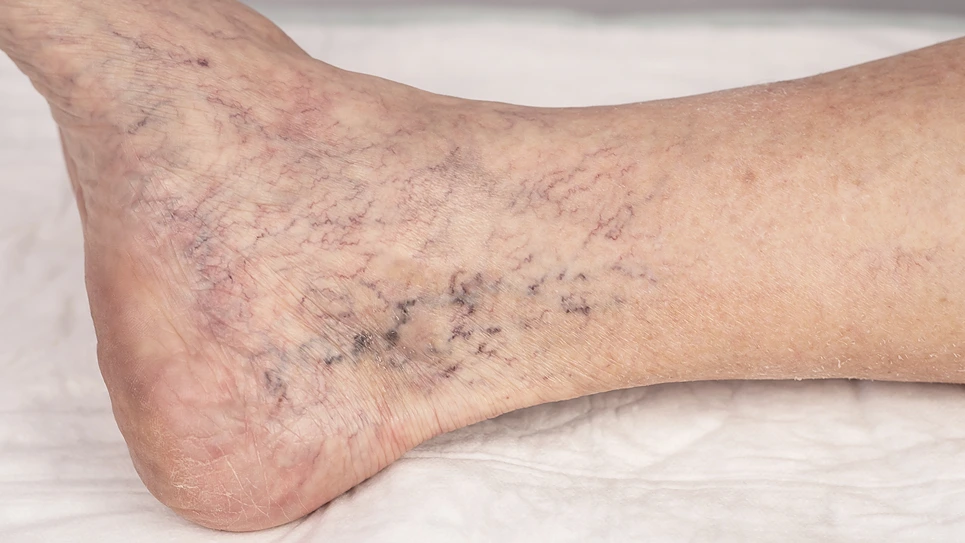
Spider veins, also known as telangiectasias, are small, dilated blood vessels that appear close to the skin’s surface. They often resemble a spider’s web or tree branches and can be red, purple, or blue in color.
While they can occur anywhere on the body, spider veins are most commonly found on the legs, ankles, and face.
Spider Veins vs. Varicose Veins
It’s important to distinguish between spider veins and varicose veins:
- Spider veins: Smaller, closer to the skin’s surface, and typically less than 1 mm in diameter
- Varicose veins: Larger, rope-like veins that bulge beneath the skin and are usually more than 3 mm in diameter
While both conditions are related to venous insufficiency, they represent different stages of vein disease progression.
The Stages of Spider Veins
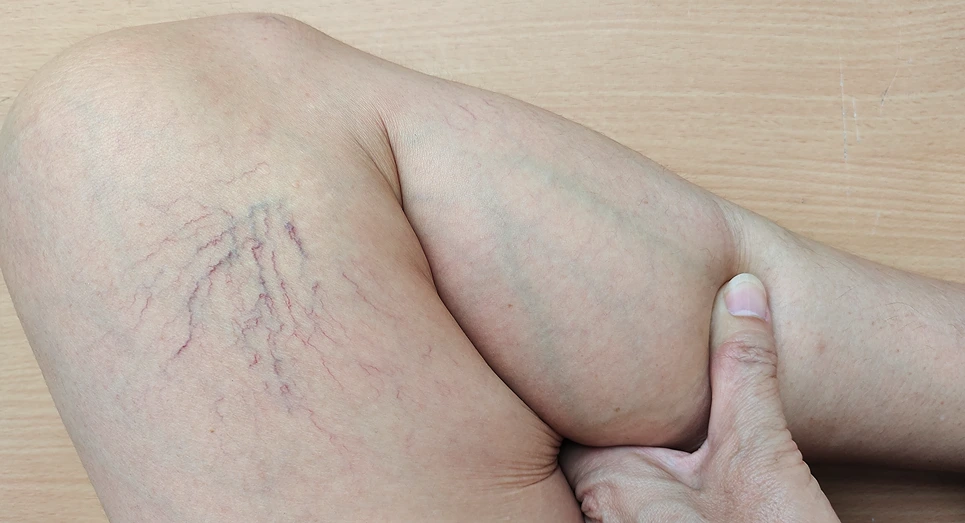
Understanding the stages of spider veins can help you identify the progression of the condition and seek appropriate treatment.
While there isn’t a universally accepted staging system for spider veins specifically, we can describe their development in relation to chronic venous insufficiency (CVI) stages.
Stage 0: No Visible Signs
At this stage, there are no visible signs of spider veins or venous insufficiency. However, some people may experience early symptoms such as:
- Leg heaviness
- Mild swelling
- Occasional discomfort after long periods of standing or sitting
Stage 1: Early Spider Veins
In this stage, small spider veins begin to appear on the skin’s surface. Symptoms may include:
- Visible red, purple, or blue veins
- Mild leg discomfort
- Slight swelling, especially around the ankles
- Occasional burning sensation
Stage 2: Moderate Spider Veins
As the condition progresses, more spider veins become visible, and symptoms may worsen:
- Increased number and size of visible veins
- Moderate leg pain or discomfort
- Noticeable swelling in the legs and ankles
- Skin changes, such as dryness or itching
Stage 3: Advanced Spider Veins and Early Varicose Veins
At this stage, spider veins become more extensive, and early signs of varicose veins may appear:
- Widespread spider veins
- Visible varicose veins
- Significant leg pain and discomfort
- Persistent swelling
- Skin discoloration or hardening
Stage 4: Severe Venous Insufficiency
In advanced cases, spider veins may be accompanied by severe symptoms of chronic venous insufficiency:
- Extensive spider and varicose veins
- Severe leg pain and swelling
- Skin changes, including hyperpigmentation and lipodermatosclerosis
- Venous ulcers in extreme cases
Risk Factors for Developing Spider Veins
Understanding the risk factors for spider veins can help you take preventive measures and seek early treatment. Common risk factors include:
- Age: The risk increases as you get older
- Gender: Women are more likely to develop spider veins than men
- Genetics: Family history plays a role in susceptibility
- Pregnancy: Hormonal changes and increased blood volume can contribute
- Obesity: Excess weight puts additional pressure on veins
- Prolonged standing or sitting: Occupations that require long periods of immobility
- Hormonal changes: Birth control pills or hormone replacement therapy
- Sun exposure: Especially for facial spider veins
- Injury or trauma: Can damage vein valves
- Certain medical conditions: Such as deep vein thrombosis or blood clots
Symptoms and Complications of Spider Veins
While spider veins are often considered a cosmetic issue, they can be accompanied by various symptoms and potential complications:
Common Symptoms
- Leg heaviness and fatigue
- Aching or throbbing pain
- Burning or itching sensation
- Swelling, especially in the ankles and feet
- Restless legs syndrome
- Skin changes, such as dryness or discoloration
Potential Complications
If left untreated, spider veins and underlying venous insufficiency can lead to more serious complications:
- Chronic venous insufficiency
- Deep vein thrombosis (DVT)
- Venous ulcers
- Bleeding from damaged veins
- Superficial thrombophlebitis
Diagnosis and Medical Evaluation
If you suspect you have spider veins or are experiencing symptoms of venous insufficiency, it’s essential to consult a healthcare professional for proper diagnosis and treatment. The diagnostic process may include:
- Physical examination
- Medical history review
- Duplex ultrasound: To assess blood flow and vein function
- Venous reflux exam: To check for valve damage
- CT or MRI scans: In some cases, to rule out other conditions
Treatment Options for Spider Veins
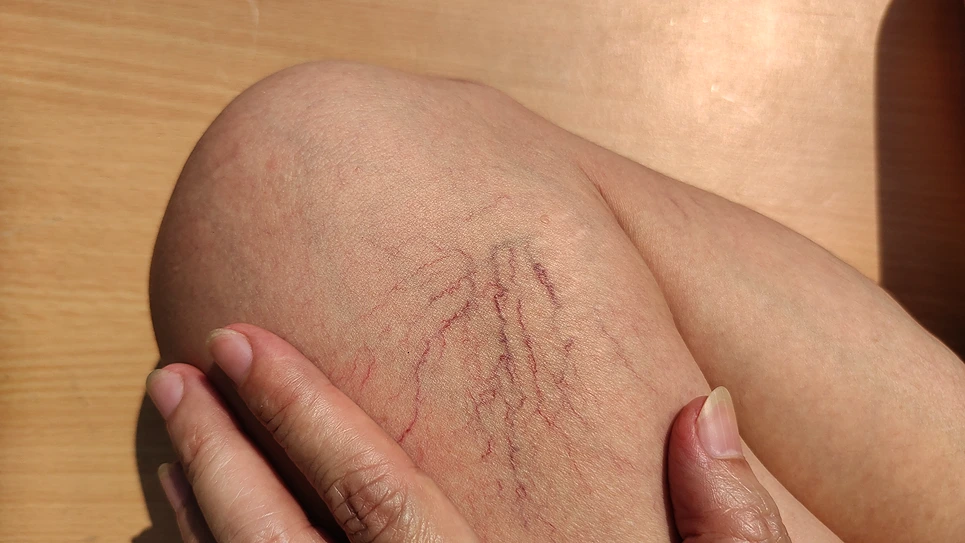
There are various treatment options available for spider veins, ranging from conservative measures to medical procedures. The best approach depends on the severity of your condition and individual factors.
Conservative Treatments
Compression stockings: Help improve blood flow and reduce swelling
Lifestyle changes:
- Regular exercise
- Weight management
- Elevating legs when resting
- Avoiding prolonged standing or sitting
Skin care: Moisturizing and protecting the skin from sun damage
Medical Procedures
- Sclerotherapy:
- Injection of a solution to close off spider veins
- Suitable for small to medium-sized veins
- Multiple sessions may be required
- Laser therapy:
- Uses focused light to destroy spider veins
- Effective for small veins and facial telangiectasias
- May require several treatments
- Radiofrequency ablation:
- Uses heat to seal off larger veins
- Minimally invasive procedure
- Often used for varicose veins but can help with extensive spider veins
- Endovenous laser treatment (EVLT):
- Similar to radiofrequency ablation but uses laser energy
- Effective for larger veins feeding spider vein networks
- Ambulatory phlebectomy:
- Surgical removal of larger varicose veins
- Can improve the appearance of associated spider veins
Prevention and Self-Care
While it’s not always possible to prevent spider veins, there are steps you can take to reduce your risk and manage symptoms:
- Exercise regularly: Focus on activities that improve leg circulation
- Maintain a healthy weight: Reduce pressure on your veins
- Avoid prolonged standing or sitting: Take breaks and move around
- Elevate your legs: When resting, raise your legs above heart level
- Wear compression stockings: Especially if you’re at higher risk
- Stay hydrated: Proper hydration supports vascular health
- Protect your skin: Use sunscreen to prevent facial spider veins
- Avoid tight clothing: Opt for loose-fitting clothes that don’t restrict blood flow
- Manage underlying conditions: Such as high blood pressure or diabetes
When to Seek Medical Care
While spider veins are often harmless, it’s important to consult a healthcare professional if you experience:
- Persistent leg pain or discomfort
- Significant swelling that doesn’t improve with elevation
- Skin changes, such as discoloration or hardening
- Open sores or ulcers on the legs
- Signs of infection, such as warmth, redness, or fever
Early intervention can help prevent the progression of venous insufficiency and improve your overall vascular health.
Conclusion
Spider veins are a common vascular condition that can progress through various stages, from early signs to more advanced symptoms.
By understanding the risk factors, recognizing early symptoms, and seeking appropriate treatment, you can effectively manage this condition and improve your quality of life. Remember that while spider veins are often considered a cosmetic concern, they can be indicative of underlying venous insufficiency, making it important to address them as part of your overall health care.
If you’re concerned about spider veins or experiencing symptoms of venous insufficiency, don’t hesitate to consult a vascular specialist or dermatologist. With proper care and treatment, you can maintain healthy veins and reduce the impact of spider veins on your daily.

